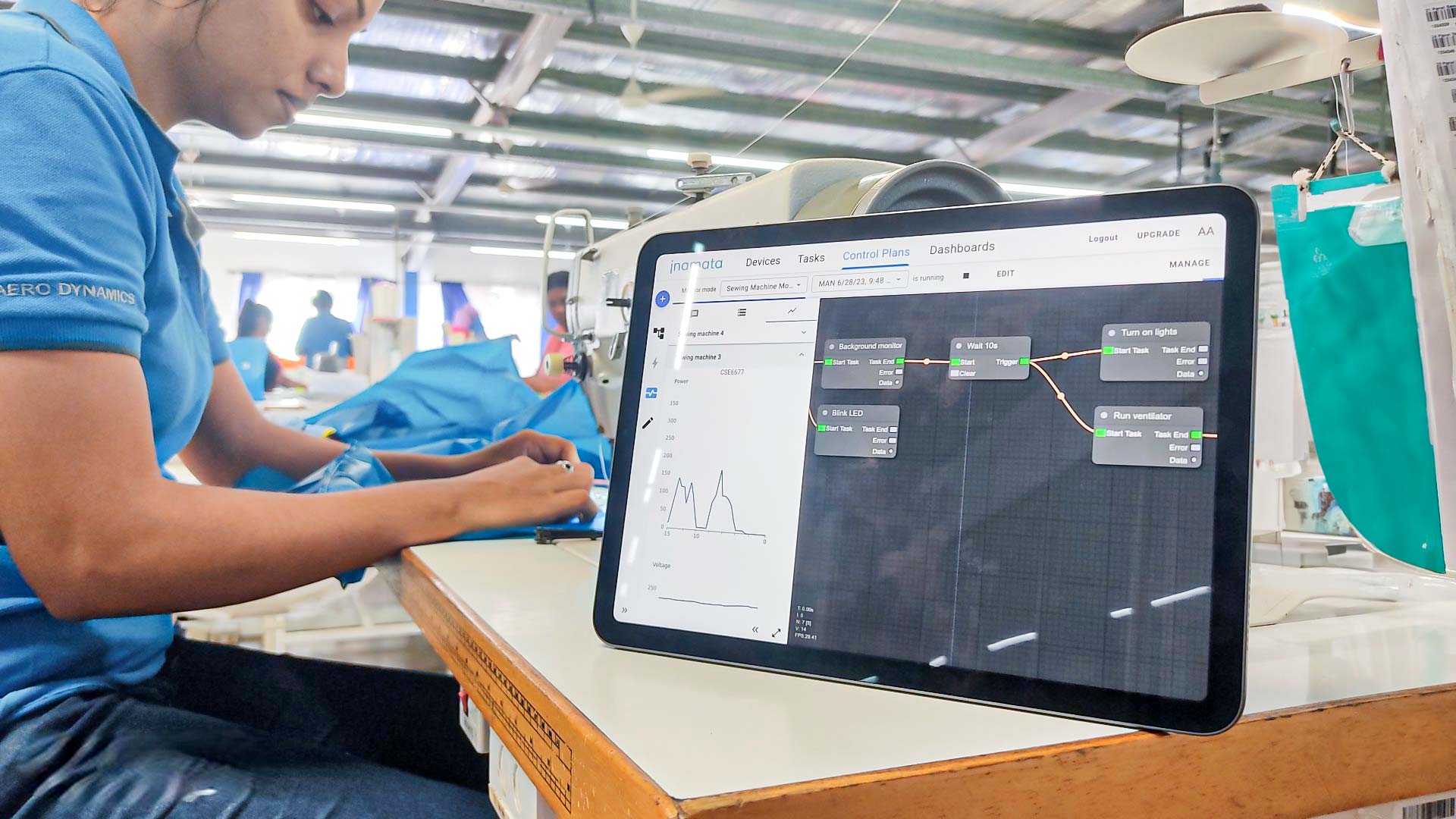Aqua dynamics
Monitoring machine utilization
Aqua Dynamics manufactures kites and sails in Sri Lanka and operates a fleet of cutting and sewing machines in order to reach their production volume. Initially, the goal of the Inamata deployment was to monitor the utilization of these machines.


Also report/dash board are working will in real time which help to get good idea about machine utilization. Knowing that dashboards can modify to get any needed information I see this is a good start of a full production monitoring system.“

The collected data corroborated their previously manually recorded data. The dashboards showed the utilization of the individual machines during the working day as well as the fleet’s average. This was displayed as a single percentage number for the previous day as well as a graph, allowing trends to be discovered.
After a few weeks of deployment, brainstorming for additional use of the system resulted in the request to be able to track the maintenance period of individual machines. This would repurpose the power button to enable maintenance mode. This would take advantage of the newly developed local action chain functionality to run a series of actions on device, without requiring server connectivity. The actions can be defined online and then be sent to the device, either to be run or installed so that they are run automatically on boot.
The maintenance state of each plug is stored online. This allows the state to either be set via the web interface or from the device itself. In the case of the smart plug, a short press toggle power while a long press toggles the maintenance mode. The state of the maintenance mode is shown on the plug via the second indicator LED. Tying this into the monitoring aspects, the downtime of individual machines, different types of machines or the fleet as a whole can be graphed.
In conclusion, the initial findings confirmed existing productivity metrics. The system’s stability was proven by operating via an international internet connection and dealing with an intermittent power supply. Looking forward, the platform’s flexibility allowed a solution specific to Aqua Dynamics to be deployed without requiring custom code while also allowing for customer specific functionality with a maintenance mode.

